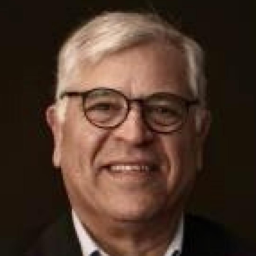Like many suffering from post-MWC fatigue, I am trying to piece together how an event of this magnitude manages to keep bucking trends. The GSMA flagship is astounding not only in its size and intensity, it also generates billions of dollars of business for suppliers and Barcelona. But why?
It really was no fun cramming onto buses and trains to get to the venue. Taxis were plentiful but restricted in movement because of poor management and traffic control in and around the venue. The distances people had to walk each day would qualify them for an Olympic event. There was barely any under-cover seating, but plenty of outdoor garden space that was only usable when temperatures reached 10 degrees centigrade or it wasn’t raining. Some even resorted to using toilets as temporary work seats! And the food, even with 54 outlets, was passable at best.
The new venue can only be described as an island smack in the middle of an industrial sea. It is large (very large), yet functional, has no cobblestones (a blessing), provides undercover walkways along its 1.2 kilometre span and despite having 72,000 people tramping over its nine massive halls, it coped really well. Barcelona itself is probably one of the few cities in Europe that can survive such a massive influx of people all needing accommodation, restaurants and bars to melt into after a hard day in the congress. Not to mention the endless round of parties, dinners and special functions put on to woo customers and press. No wonder people leave exhausted each year.
Yet all of this combined means that in one place for four days each year you can see, meet and hear almost every key player in the GSM mobile world. And there lies its secret. The glitz, the ritzy exhibits, the partially clad promo girls, the gimmicks, the giveaways are all inconsequential when you get down to the business of doing business. No longer do people turn up at events like MWC just to attend the conference sessions, walk the stands or attend the parties, they all come here to network in person and do business.
For suppliers, all their customers and prospects are in one place for one week. No need to send sales teams around the globe to meet with them, they come to you. And not just the managers and directors, there are more telco C-levels in Barcelona for MWC than are left behind in the office. For suppliers and operators alike, if you are not seen at MWC you are either out of business or out of a job.
Forget virtual social networking, this is good old-fashioned, physical networking at its best. Most meetings are arranged ahead of time and stands are changing slowly from gaudy temples pulling in passer-bys to sophisticated business environments complete with comfortable meeting rooms, lounges, bars, espresso machines and delicacies including Swiss chocolates, Portuguese egg tarts, French pastries and wines from every corner of the globe. Ericsson even recreated a village market square complete with food vendors on tricycles and roads taking prospects on ‘journeys’ into customer experience and network performance.
All of that aside, the most pleasing aspect of this year’s MWC was the appearance of so many digital service players. Carmaker, Ford, had a massive presence showing off its connected car solutions. There were e-Health players, smart grid and utility suppliers, m-Payment providers and the event itself was NFC-enabled. Hall 8 was packed with the most amazing application developments and mobile marketing purveyors. It was not quite moving the mountain but it was great to see the digital and telecom worlds really getting together after years of playing around.
Above all, the indications are that despite our worst fears of declining revenues and margin erosion there was a real appetite, not just for the delicacies mentioned above, but for venturing into new business opportunities with new partners. There is no doubt the digital economy is ramping up, and it looks like the telcos may actually be along for the ride.
First posted as The Insider at TM Forum
